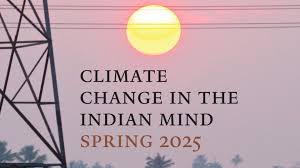India’s Climate Smart Travel Guide 2025
Planning trips based on weather patterns, safer routes, and ecological balance is becoming essential. That’s why understanding climate smart travel in India is more important than ever. This guide walks you through the best seasons, regions, itineraries, and practical tips for a future-ready way of travelling.

Table of Contents for Climate Smart Travel in India
- Climate-Smart Travel in India: What It Really Means
- Why 2025 Is the Year for Climate-Smart Travel in India
- Best Seasons for Climate-Smart Travel in India
- Top Regions Ideal for Climate-Smart Travel in India
- 2025 Climate-Smart Travel in India Itinerary
- Packing Tips for Climate-Smart Travel in India
- External & Internal Resources
- FAQs
Climate Smart Travel in India: What It Really Means
Climate-smart travel in India refers to choices that balance safety, comfort, environmental impact, and seasonality. Instead of relying on traditional travel calendars, it prioritizes:
- Weather stability
- Responsible mobility
- Eco-conscious stays
- Region-specific climate considerations
- Reduced carbon footprint
This approach ensures smoother, safer, more meaningful journeys.
Why 2025 Is the Year for Climate Smart Travel in India
With rising temperature fluctuations, intense monsoons, and evolving travel trends, 2025 is the year travellers must rethink how they move through India. The country’s diverse climates require smarter, data-backed planning to experience destinations at their best.
Even leading authorities like the UN Environment Programme highlight climate-conscious travel as a key future trend.
Best Seasons for Climate Smart Travel in India
Winter (October–March)
Perfect for:
- Rajasthan deserts
- Himalayan foothills
- South Indian backwaters
- Central India wildlife sanctuaries
Why it works:
Winter offers stable temperatures, lower humidity, and clearer skies — ideal for long-distance trips.
Summer (April–June)
Best regions:
- Himachal Pradesh
- Uttarakhand
- Kashmir
- North-Eastern India
Why it works:
Cooler altitudes balance the heat while offering pristine landscapes.
Monsoon (July–September)
Perfect for:
- Western Ghats
- Meghalaya
- Coorg
- Valley viewpoints
Why it works:
Greenery peaks in these regions, offering scenic retreats with proper planning.
Top Regions Ideal for Climate Smart Travel in India
✅ 1. North India: Climate-Controlled Adventure Zones
- Best for: Trekking, culture, heritage
- Why climate-smart: Predictable winter windows and safe summer altitude escapes
- Don’t miss: Spiti Valley, Dharamshala, Rishikesh, Jaipur
✅ 2. South India: Cooling Coastlines & Breezy Highlands
- Best for: Beaches, wellness, heritage
- Why climate-smart: Coastal winds, monsoon charm, year-round comfort
- Don’t miss: Munnar, Wayanad, Pondicherry, Gokarna
🔗 Internal link: https://safetravel.in/south-india/
✅ 3. East India: Monsoon-Friendly Escapes
- Best for: Culture, mountains, offbeat exploration
- Why climate-smart: Ideal for rain lovers and cooler temperatures
- Don’t miss: Meghalaya, Sikkim, Ziro Valley, Tawang
🔗 Internal link: https://safetravel.in/north-east-india/
✅ 4. West India: Desert, Forests & Beaches
- Best for: Wildlife, forts, coasts
- Why climate-smart: Winter-friendly climate + diverse ecology
- Don’t miss: Gir, Kutch, Goa, Lonavala
🔗 Internal link: https://safetravel.in/goa/
2025 Climate Smart Travel in India Itinerary
Day 1–3: Kerala Backwaters
- Optimal weather: Nov–Feb
- Activity focus: Houseboats, birdwatching, Ayurveda
- Climate-smart benefit: Low rainfall & cooler humidity
Day 4–6: Coorg & Wayanad Highlands
- Best time: Oct–April
- Benefit: Cool forests + clean air
Day 7–9: Rajasthan Heritage Belt
- Best time: Nov–Feb
- Benefit: Dry, pleasant climate
Day 10–12: Himachal or Sikkim
- Best time: March–June
- Benefit: Pleasant mountain temperature escape
Day 13–14: Goa
- Best time: Nov–Feb
- Benefit: Beach-perfect climate
Packing Tips for Climate-Smart Travel in India
- Light layers for mixed climates
- Refillable water bottle
- Quick-dry clothing
- Solar power bank
- Reusable hygiene kits
- Compact rain gear
- Biodegradable toiletries
FAQs About Climate Smart Travel in India
Q1. What is climate smart travel in India?
It’s a travel strategy focused on safe, responsible, environmentally-friendly trip planning based on seasonal climate patterns.
Q2. When is the best time for climate-smart travel in India?
Winter (Oct–Mar) is ideal, but different regions thrive in different seasons.
Q3. Is climate-smart travel more expensive?
No — it’s about planning intelligently, not spending more.
Q4. Which regions are perfect for climate-smart travel?
Kerala, Sikkim, Spiti, Coorg, Rajasthan, Goa, and Uttarakhand.
Q5. How does Safe Travel help travellers plan?
Safe Travel provides expert-guided itineraries, safe routes, verified stays, and region-based seasonal guidance.
